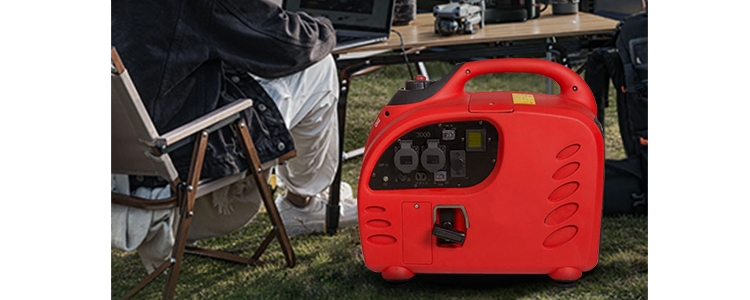In today's electricity-reliant world, inverter generators have become an essential power solution for emergencies or portable power needs. Whether during power outages caused by natural disasters or while exploring the wilderness, working on remote job sites, or camping far from the grid, a high-performing, portable, and efficient inverter generator is a must-have companion. However, choosing the right one from the many brands and models can be daunting. The following is a detailed buying guide from Home Power Inverter to help you understand the key factors of inverter generators, ensuring you make an informed purchasing decision.
How Inverter Generators Work?
The primary difference between an inverter generator and a traditional generator lies in the way electricity is converted. Traditional generators use an internal combustion engine (such as gasoline or diesel) to produce alternating current (AC) directly. In contrast, inverter generators first convert the AC to direct current (DC) before using an inverter to convert it back to stable, clean AC power. This process minimizes voltage fluctuations and noise, making inverter generators ideal for powering sensitive electronics, computers, and precision instruments.

Portability and Mobility Considerations
Weight and Size: Inverter generators are known for their compact design and lightweight nature, which is the foundation of their portability. Most portable inverter generators weigh between 10 and 50 kilograms, with ultra-portable models weighing as little as 5 kilograms, making them easy for one person to carry over short distances. However, lighter weight often comes with lower power output, so you must balance this based on your actual needs.
Transportation Tools: Heavier models may come with wheels and handles for easier transport on flat surfaces. However, be cautious when moving them over rough or hilly terrain, where additional tools might be needed.
Power Needs and Wattage Selection
Starting Wattage vs. Running Wattage: Understanding the difference between these two wattages is key to selecting the right inverter generator. Starting wattage (or peak wattage) refers to the highest amount of power needed when a device is first turned on while running wattage is the continuous power required during normal operation. For example, a refrigerator may require a higher surge of power when starting but much less once running.
Power Calculation: To determine the wattage you need, add up the power consumption of all the devices you plan to run simultaneously and leave a margin for unexpected needs or additional loads. Generally, home backup generators require at least 3,000 to 5,000 watts, while camping or outdoor activities can be supported by portable models in the 2,000 to 3,000-watt range.
Three Typical Applications for Inverter Generators
- Inverter Generators for Workplaces
Requirements: Designed to power large tools, heavy equipment, or direct connections to electrical panels, requiring high stability and reliability.
Recommendation: Industrial-grade inverter generators with a maximum power output exceeding 5,000 watts, typically equipped with transfer switches for safe power switching. These generators are larger and heavier but often come with wheels for easy mobility on job sites.
- Inverter Generators for Home Backup
Requirements: Capable of supporting essential household appliances like refrigerators, air conditioners, and electric stoves, while also meeting the power needs of sensitive electronics like laptops and phones.
Recommendation: Medium-sized inverter generators with 3,000 to 5,000 watts of output, offering efficient energy use and low noise levels for home emergencies.
- Inverter Generators for Camping and Outdoor
Requirements: Lightweight, quiet, and portable, able to handle basic needs such as lighting, cooking, and charging devices.
Recommendation: Portable inverter generators with 2,000 to 3,000 watts of output, ideal for campers looking for easy operation, minimal noise, and a low environmental impact. The 2000W inverter generators for sale on our website are quiet, portable, and fuel-efficient, making them ideal for use while camping.

Other Important Considerations
1. Fuel Efficiency: While inverter generators are known for their efficiency, fuel consumption can still vary between brands and models. Choosing a fuel-efficient generator reduces running costs and environmental impact.
2. Noise Level: Noise is a critical factor for outdoor use, especially in settings like camping. A low-noise generator significantly enhances the user experience and minimizes disturbance to surroundings.
3. Additional Features: Extra functionalities like remote control, smart displays, and USB charging ports may not be essential but can add convenience to everyday use.
4. Maintenance and Upkeep: Before purchasing, consider the generator’s maintenance requirements and service intervals to ensure long-term optimal performance.
Purchasing an inverter generator involves multiple considerations. By understanding its working principles, portability, power needs, and suitability for different applications, you’ll be able to choose a generator that meets both current and future needs. Hopefully, this guide from Inverter Online Shop will provide valuable insights and assistance in your decision-making process.
